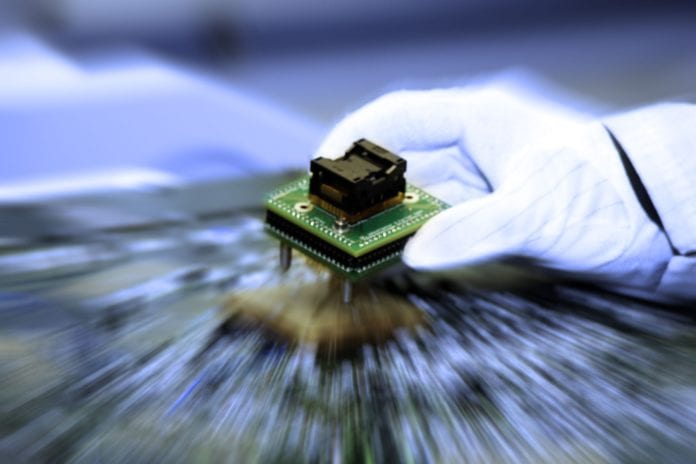A few weeks ago, the movers and shakers of the IoT industry converged on the Santa Clara Convention center for the 2018 edition of IoT World Americas. IoT World is held in several locations annually and is a combined industry tradeshow, education and networking event focused on IoT.
During one of the networking events, several IoT analysts were discussing who was in attendance and who wasn’t – kind of a “the gang’s all here” discussion. After a heated debate, I realized that if we’re talking about IoT leaders “the gang was not all here.” More specifically, the leaders may not be who you think they are.
Where Was Qualcomm?
Qualcomm was nowhere to be found. Maybe more important than their absence, was that they weren’t even in the discussions. To me this is crazy. I think Qualcomm is about to be anointed the “King of IoT Silicon.”
People don’t recognize how dominant Qualcomm is in IoT. If the NXP merger goes through, which now looks likely, they’ll be an even more dominant figure. And that’s dominant not only on the device side where NXP will add additional heft but in the servers/IoT gateways that connect and aggregate edge devices as well.
“Sure,” you may say, “Qualcomm is key in the cell phone industry, but IoT?” you ask. Here’s my argument–you can respond when I’m done.
Five Reasons Why Qualcomm is the king of IoT silicon
- Qualcomm is the historical founder of IoT. IoT has its roots in mobile devices and technologies such as cars, phones, tablets, and laptops, with location-based service mixed in. We all know that IoT is about connected devices, what we also need to remember is that most of those connected devices will be connected wirelessly. Qualcomm has been a, if not the key driver of mobile connectivity and computation for at least 25 years (with Omnitracs) and even historically since the start of the company.
- Qualcomm’s expertise is in driving scale for connected computing devices. Connectivity is just the beginning. Connected devices don’t help unless you can extract meaningful information from sensor applications in a timeframe of relevance. IoT data demands require the movement of computation and connectivity closer to where the data is measured, allowing enterprises to measure and respond more quickly to changes in this data.
IoT is also a game of scale. Scale in terms of the total number of connected devices, the amount of data generated, and the amount of data moved and analyzed. Scale requires considerable investment to drive miniaturization and optimization, not to mention the cost of computation and communications.
Qualcomm is already the world’s leader in mobile wireless connected devices. I see no reason they won’t be able to use their current R&D and ability to scale to extend their dominance to connected IoT devices. - Qualcomm is the king of connectivity. Many of the LTE technologies used in current mobile devices are the same fundamental technologies being modified and extended for IoT applications. LTE CAT-NB1 and CAT-M1 are extensions for IoT and Qualcomm is already delivering these technologies. They’re already driving next-generation 5G and again will be dominant when it comes to deployment.
IoT is not just about cellular. Qualcomm’s additions to their portfolio over the years include leaders like Atheros (Wi-Fi) and CSR (Bluetooth), which add to the case that they are the leader in all the major connectivity technologies necessary to dominate IoT. Mix in a dash of Qualcomm’s location-based technologies like GNSS/GPS and 802.15.4 (Zigbee and Z-Wave), and, bam, you’ve got an IoT connectivity powerhouse. - Qualcomm has been driving the miniaturization of computers for years. Our mobile handsets are connected computers that gather diverse types of data, analyze that data, and then react. Much of that work is being done today in the cloud. Extending this to IoT, you need a flexible combination of CPU, GPU, and DSP resources to match the diverse computation needs to process IoT data. Whether it’s simple “old school” data analysis or Artificial Intelligence (AI) and Machine Learning (ML), you need to be able to balance the compute for power and performance and cost for specific edge device and gateway applications.
Qualcomm has adopted a heterogeneous compute architecture that does just that and allows the balance of CPU/GPU/DSP to be tailored to meet the specific application. Again, this architecture is based on Qualcomm’s mobility history, which, surprise, is driven by needing to deal with diverse data and the need to balance power, cost, performance (can you say “cell phone”) and deliver it at scale. - Qualcomm has been focused on mobile security since the advent of the cell phone. Qualcomm has years of mobile security experience and a footprint of millions of devices that are part of secured mobile systems from device to edge to gateway to cloud. Combining this technology with coverage across both computation and communication can provide a robust, scalable solution with no extra silicon costs. Qualcomm is also investing in new software technologies such as their wireless edge service, which is focused on deployment of edge device services at scale and zero touch life-cycle management.
Final thoughts
Qualcomm has a long history in mobile computation, connectivity, and data solutions delivered at scale–a history that can easily be adapted to IoT solutions. Combine this history, with their current portfolio of solutions and add NXP (with their leadership in the embedded space) and it’s hard to see anyone else that can compete with them for the title of “King of IoT Silicon.”
If you don’t agree, prove me wrong. Click here and tell me why. We’ll publish the “best of the best” rebuttals, and we’ll even do a little debating along the way.

